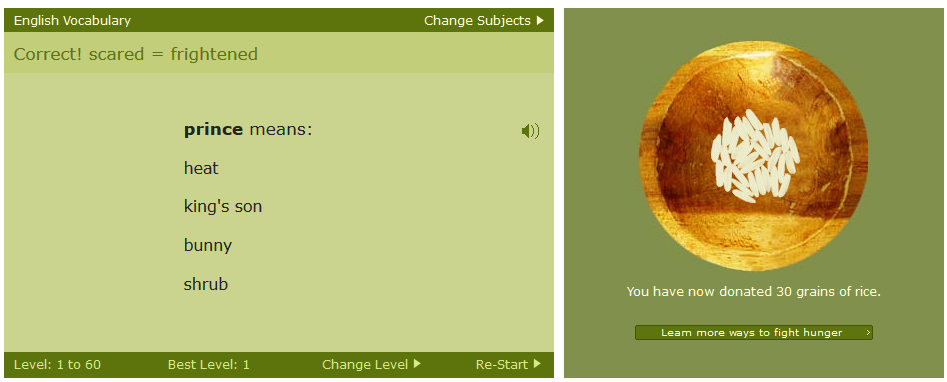Don't miss out on the best jobs!
Subscribe to HelpGoAbroad and weekly we will sent you an email with latest job posts. Provide your email address below
What is micro-volunteering and why you need to care?
Micro-volunteering is an opportunity to help others by dedicating small portions of time (normally 30 minutes a day). It does not oblige you to anything, more than that, it costs you nothing. More often than not, micro-volunteering is done from home on the web or from the gadget.
Micro-volunteering helps grow your child's interpersonal intelligence in the first place. Social contacts, interactions with other people are essential for a better social engagement.
You can easily enhance the community service cooperation by participating in different micro-volunteering events and fundraising. Besides, there are so many other types that can help you with your micro-volunteering plan.
Types of micro-volunteering
Content micro-volunteering
Self-submit websites, users sharing their photos, live videos, etc. – all that allows children to share their thoughts, ideas, fears, etc. And that's what will be the basis of content micro-volunteering in the nearest future. In fact, it has already become a trend.
Digital crowdsourcing has become an essential tool of content micro-volunteering. And there are many successful cases. Let's take, for instance, Wikipedia that has become viral among citing sources. Notwithstanding its questionable authenticity, Wikipedia provides basic knowledge of the facts and phenomena for those who are eager to learn.
FamilySearch Indexing (the Mormon Church project) is another example of successful self-submitting content.
One more particularly great example of a self-submitting website is Zooniverse with 71,531,802 citizen scientific micro-volunteering projects and 1,560,508 registered volunteers (as of September 2017).
AI micro-volunteering
AI rapid development has shown that Siri, Alexa, Cortana, and other assistants are not the limit to the technological growth. Micro-volunteering technologies are mot an exception.
FallingFruit has already made a huge step in this direction with interactive mapping, a powerful prototype of smart mapping that is going to conquer the world soon.
Interactive technology used by Reach-in helped to entertain and delight kids with cancer at Seattle Children's Hospital. Invention of such interactive webcams is a progress that micro-volunteering has been expecting recently.
More smart technologies are implemented in the micro-volunteering apps shared by HelpFromHome.
Educational micro-volunteering
The most vivid example of educational micro-volunteering is Freerice, a successful non-profit website based on the World Food Program. The main aim is to end hunger in the world. And with the fun English learning game, kids can participate in donating 10 grains of rice of each correct answer.
To keep children occupied all the time, there's an everyday growing list of micro-volunteering activities for summer.
How to teach your child micro-volunteering?
With the invasively increasing popularity of social media, children are spending more time on networks. Vectoring their energy to micro-volunteering groups can be another chance to make a successful impulse for the next generations.
I noticed that my son spends so much time on social media. And when I talked about it with my close friend Miranda Ashton, PhD in social studies and the writer at WritersDigest and AceWriters, she immediately had an answer how to deal with that. She said: "Start micro-volunteering on social media and then go further." She also suggested a few tips she uses with her children. And I'm more than happy to share them with you:
Social media choice
Choose one social network your child likes most of all. That's practical minimalism of your choice. I've chosen Facebook, as my son can't live a day without it. The easiest way to micro-volunteer on Facebook is reacting and sharing. That is the simplest things your kids can do. The same can be done on other social media.
Groups engagement
Your child can join a group that helps homeless people, animals, nature, etc. But the most essential thing here is that s/he may participate in group discussions, react and share their content, invite friends, etc.
There are hundreds of pets defenders groups and animals care organizations that lead an active social media life.
Coaching
Explain everything to your child and follow his/her progress. Become a coach for your kid. If it's difficult to excite and motivate your child to micro-volunteer, start doing it yourself and show an example.
Make a plan and stick to it. Write down your results. Sounds pretty dull and scrupulous, but that actually helps you organize your schedule. Micro-volunteering takes not so much time, but it may become a crucial part of your everyday activities.
Conclusion
Homeschooling isn't only about learning, but also about morality. Create a positive atmosphere of caring and love. Enrich homeschooling with micro-volunteering and you will see the results immediately. Your child will learn empathy, compassion and many more good moral qualities, as well as develop interpersonal intelligence.
Do you practice micro-volunteering with your child? How does it affect your life?
You are welcome to share your ideas in comments.
Sign in to publish a comment




Be the first to comment on this post.